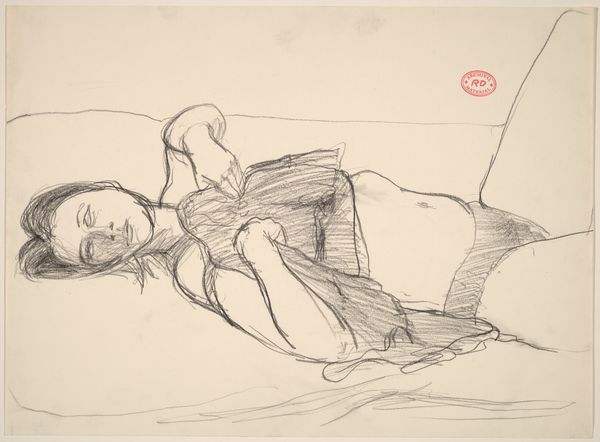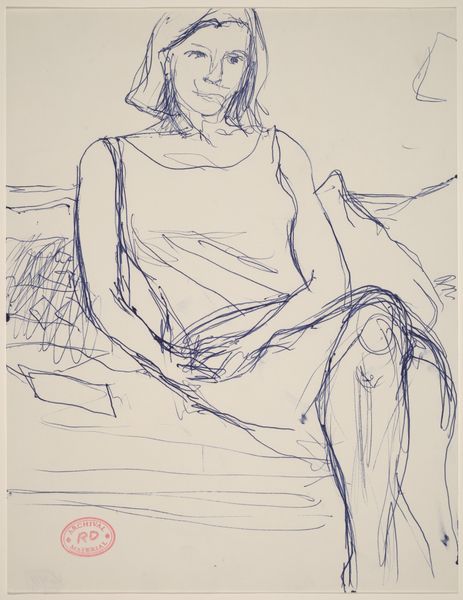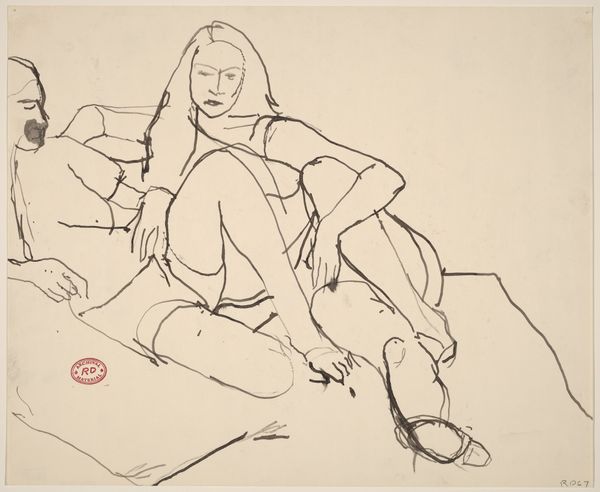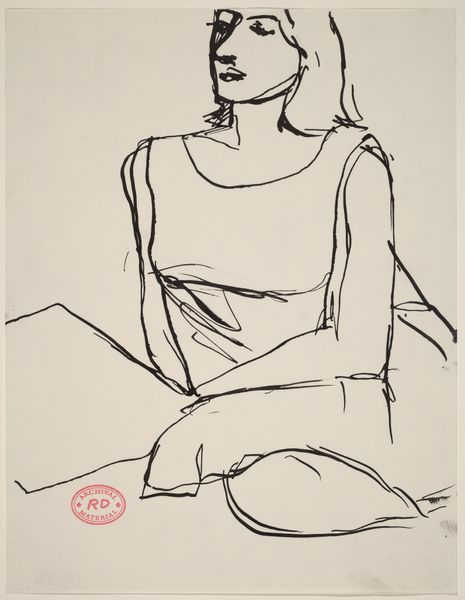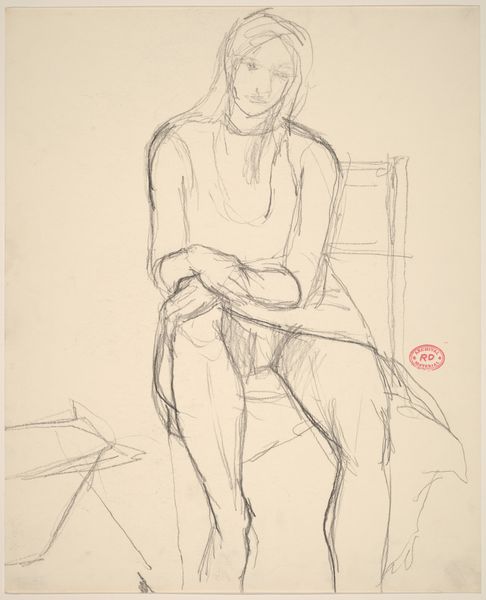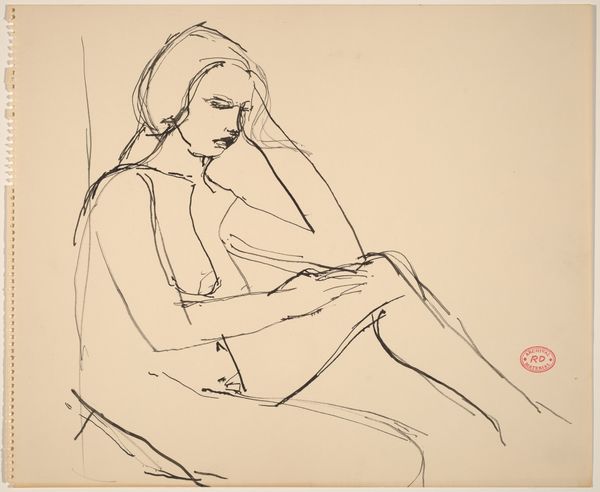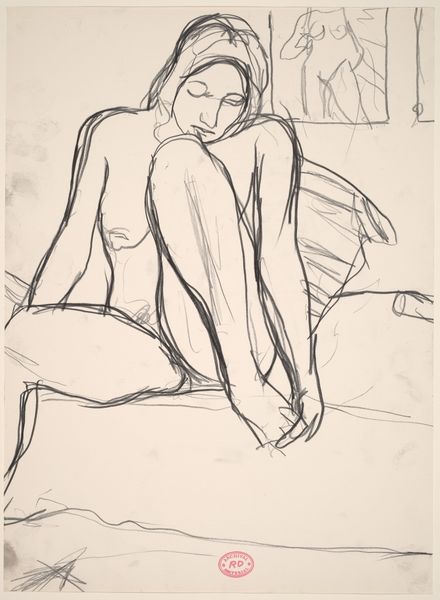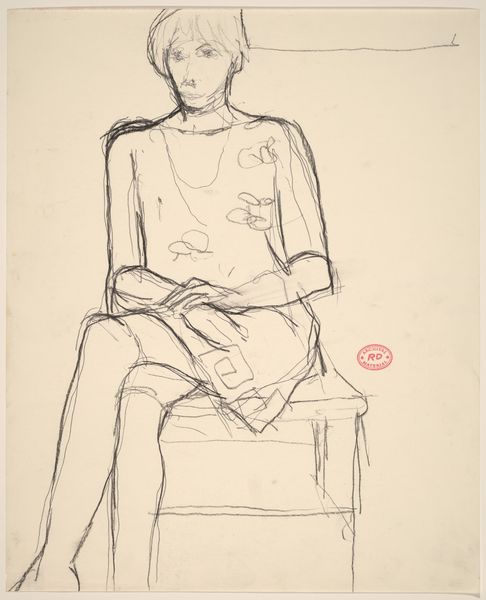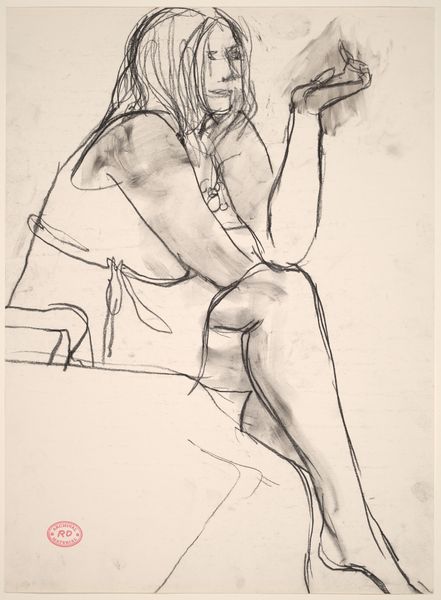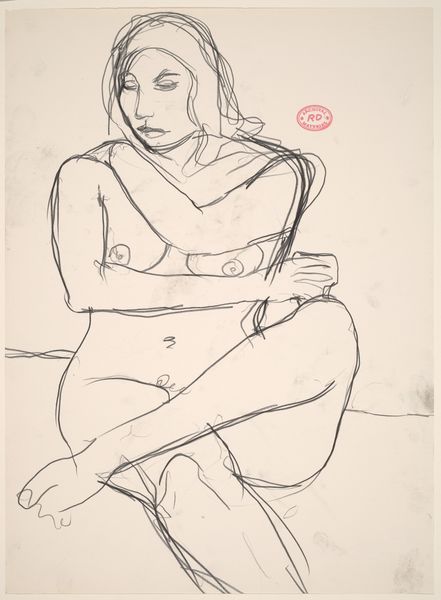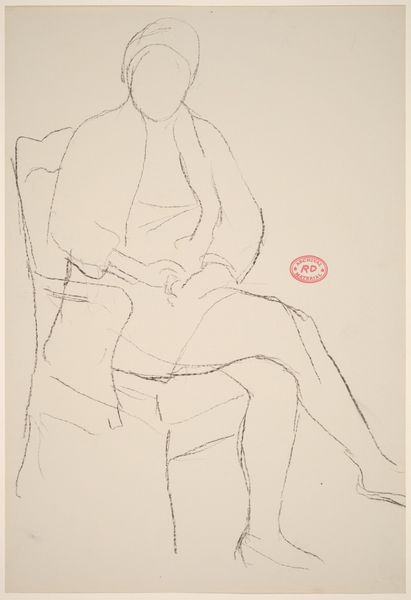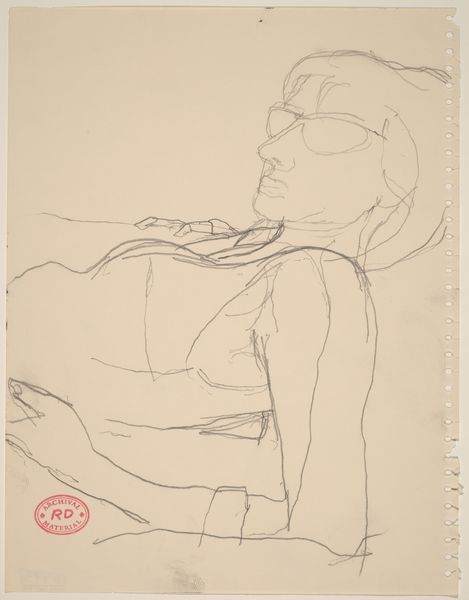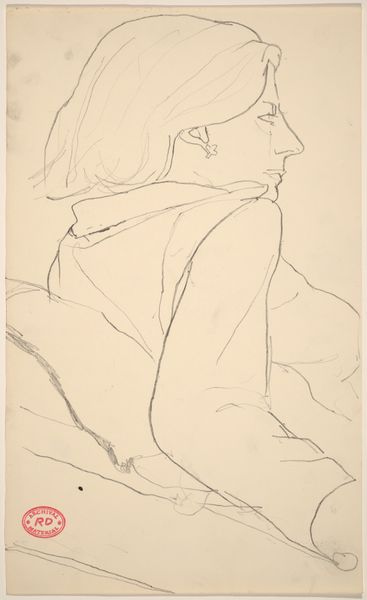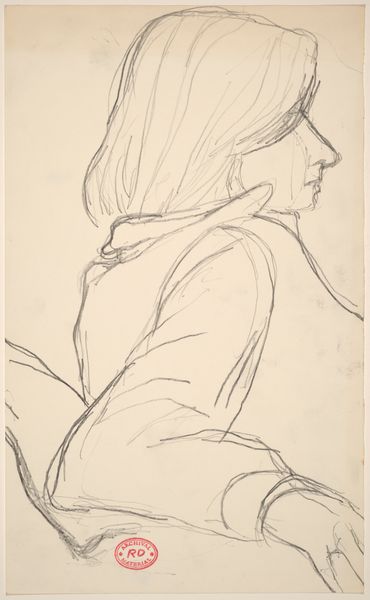![Untitled [woman in a dress seated on the floor] by Richard Diebenkorn](/_next/image?url=https%3A%2F%2Fd2w8kbdekdi1gv.cloudfront.net%2FeyJidWNrZXQiOiAiYXJ0ZXJhLWltYWdlcy1idWNrZXQiLCAia2V5IjogImFydHdvcmtzL2IwMTFmODg4LTZkNjAtNDA4Yy04ZGJlLWZiMjQ0NmQzMjgxMy9iMDExZjg4OC02ZDYwLTQwOGMtOGRiZS1mYjI0NDZkMzI4MTNfZnVsbC5qcGciLCAiZWRpdHMiOiB7InJlc2l6ZSI6IHsid2lkdGgiOiAxOTIwLCAiaGVpZ2h0IjogMTkyMCwgImZpdCI6ICJpbnNpZGUifX19&w=3840&q=75)
Untitled [woman in a dress seated on the floor] 1955 - 1967
0:00
0:00
drawing
#
portrait
#
drawing
#
light pencil work
#
pen sketch
#
pencil sketch
#
figuration
#
personal sketchbook
#
bay-area-figurative-movement
#
ink drawing experimentation
#
pen-ink sketch
#
arch
#
sketchbook drawing
#
sketchbook art
#
fantasy sketch
#
initial sketch
Dimensions: overall: 21.6 x 27.9 cm (8 1/2 x 11 in.)
Copyright: National Gallery of Art: CC0 1.0
Editor: Here we have Richard Diebenkorn's "Untitled [woman in a dress seated on the floor]," made sometime between 1955 and 1967. It appears to be a pen or pencil drawing. There's a sense of immediacy to it, a fleeting moment captured. What are your thoughts on it? Curator: I see a fascination with the labor involved in seeing and representing. Diebenkorn's lines aren't precious. Look at how they build up, a kind of visual accumulation mirroring the sitter's material reality - clothing, the floor she sits on. This isn’t about idealization. How do you see that lack of idealization impacting the viewer’s experience? Editor: It feels less about portraying beauty and more about exploring form. The sitter's anonymity also changes things. We focus more on the line work itself, the physical act of drawing, than on the subject's identity. Curator: Exactly! Think about the paper, the ink – these materials aren't neutral. They carry the weight of their own production, their own place within a system of commodity. Diebenkorn’s work blurs that high art/low art divide, presenting drawing as both concept and commodity. The drawing shows how we literally "consume" the image. Editor: So, by showing the process so openly, Diebenkorn makes us consider the labor of the artist and the materials he is working with. It definitely changes how I see what's actually on display, so to speak. Curator: Precisely. The visible labor, the humble materials, reposition our understanding of art and making. They challenge us to value not just the final "product" but the entire system of creation and consumption. Editor: That gives me a lot to think about! It reframes my understanding of how materials and actions inform the piece beyond the subject matter. Curator: Indeed, and that's a valuable perspective. By thinking about art this way, we consider the entire picture surrounding it.
Comments
No comments
Be the first to comment and join the conversation on the ultimate creative platform.
